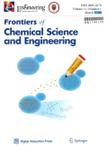Advancement in materials for energy-saving lighting devices
Advancement in materials for energy-saving lighting devices作者机构:Department of Chemical EngineeringCurtin UniversityPerth 6845Australia
出 版 物:《Frontiers of Chemical Science and Engineering》 (化学科学与工程前沿(英文版))
年 卷 期:2012年第6卷第1期
页 面:13-26页
核心收录:
学科分类:0817[工学-化学工程与技术] 08[工学] 0703[理学-化学] 0803[工学-光学工程] 0822[工学-轻工技术与工程]
主 题:energy-saving lighting devices solid statelighting devices
摘 要:This review provides a comprehensive account of energy efficient lighting devices, their working principles and the advancement of these materials as an underpinning to the development of technology. Particular attention has been given to solid state lighting devices and their applications since they have attracted the most interest and are the most promising. Solid state lighting devices including white light emitting diodes (LEDs), organic LEDs (OLEDs), quantum-dot LEDs (QLEDs) and carbon-dot LEDs (CLEDs) are promising energy efficient lighting sources for displays and general lighting. However there is no universal solution that will give better performance and efficiency for all types of applications. LEDs are replacing traditional lamp,; for both general lighting and display applications, whereas OLEDs are finding their own special application,; in various areas. QLEDs and CLEDs have advantages such as high quantum yields, narrow emission spectra, tunable emission spectra and good stability over OLEDs, so applications for these devices are being extended to new types of lighting sources. There is a great dean of research on these materials and their processing technologies and the commercial viability of these technologies appears strong.



